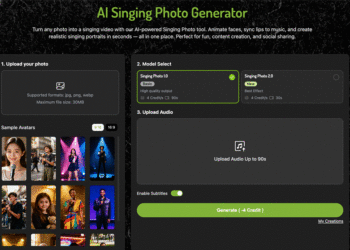The retail landscape seldom sits still. Just when everyone had accepted self‑checkout kiosks and same‑day delivery as the height of modern convenience, another shift is reshaping the high street: the move from scripted chatbots to autonomous AI agents. For retail business owners, managers, and tech‑savvy entrepreneurs, the message is unmistakable—customers have raced ahead, and the tools of yesterday are no longer good enough for the experiences they demand today.
The Decline of the Chatbot in Retail
A few years back, a chatbot on your website or app felt revolutionary. It answered FAQs at 3 a.m., saved human agents from routine questions, and never asked for overtime. Yet, as digital literacy soared, cracks began to appear. Shoppers wanted natural conversations; bots served canned responses. They needed guidance; bots repeated, “I’m not sure I understand your question.”
Worse, most chatbots sat in isolation from stock systems, order histories, or loyalty data. The results were predictable: repeated hand‑offs to staff, abandoned baskets, and the kind of frustration that drives customers straight to a competitor’s site. In a market where 69 per cent of retailers already attribute revenue increases to AI and 72 per cent report lower operating costs, according to NVIDIA’s annual “State of AI in Retail and CPG” survey, static bots have become a liability rather than a differentiator. Retail has simply outgrown reactive scripts; it needs intelligent, proactive assistants.
The Rise of AI Agents
Enter the AI agent—a system that blends conversational intelligence with decision‑making and real‑time data access. Unlike their predecessors, AI agents do more than talk. They:
- understand natural language with context
- draw on live inventory, CRM, and ERP data
- act across channels—from an app’s chat window to an in‑store kiosk
- learn from every interaction, refining recommendations on the fly
Imagine a customer asking for tennis shoes in a specific size. The agent checks current stock, offers colour variants, cross‑references the shopper’s purchase history, and reserves the preferred pair for click‑and‑collect—all in one seamless flow. That is the operational leap that is now within reach.
How AI Agents Are Taking the Lead in Retail
AI agents have shifted from novelty to everyday MVP. They handle routine questions so well that escalation rates often fall by roughly 40 per cent, giving human staff more time for high‑value tasks. Because the agent can read live transaction data and browsing patterns, it nudges shoppers toward relevant add‑ons, increasing average order values without any hard sell.
They also rescue stalled checkouts. An expired voucher, a delivery doubt, or a payment hiccup is spotted and fixed before the shopper clicks away. Meanwhile, the same platform analyses aggregate conversations to reveal slow‑moving lines, regional demand spikes, and shifting customer sentiment—insights businesses can act on within hours.
In practice, launching an AI Agent for retail that plugs straight into stock, order, and loyalty systems is becoming the quiet differentiator for brands determined to outpace rivals still clinging to rule‑based bots.
Getting an AI Agent Without the Headache
Some retailers toy with the idea of stitching together open‑source components themselves. The upside is full control, the downside is months—sometimes years—of trial, error, and spiralling costs. Others opt for a ready‑made solution, only to discover it behaves like a repackaged chatbot. Between those extremes sits a pragmatic path: teaming up with a seasoned retail software development company to build a custom-made AI agent specifically tailored to business needs.
Such a partner can fine‑tune language models to your brand tone, integrate securely with payment gateways, and ensure GDPR compliance from day one. The aim is not to buy tech for tech’s sake but to weave intelligence tightly into everyday workflows—stock queries, returns, post‑purchase care—where customer loyalty is won or lost.
Best Practices for Building Your Retail AI Agent
A well‑built AI agent is more than a clever chat window; it is the connective tissue linking customer intent to every corner of your retail stack. The guidance below distills lessons learned from live deployments across fashion, grocery, and specialty chains.
Treat each practice as a small project of its own, and your agent will launch faster, scale smoothly, and deliver value you can measure.
1. Design for Intent, Not Just Interaction
Start by mapping the concrete jobs shoppers need to finish—checking delivery status, reserving a click‑and‑collect order, locating an item in‑store. For each job, outline the information sources the agent must query and the actions it should take autonomously. This “intent blueprint” keeps development focused on outcomes, not chatter. Once live, monitor which intents occur most often and refine flows around them. Your agent should solve the top 20 per cent of issues that create 80 per cent of support demand.
2. Personalise, Don’t Generalise
Shoppers expect the agent to “remember” them wherever they drop in. Feed it purchase history, loyalty status, and browsing behavior so recommendations feel like good service, not surveillance. A vegan buyer should never receive a prompt for leather goods, a customer who always buys items in size 10 should see new releases in that size first. When preferences are unknown, offer gentle prompts, such as, “Do you prefer vegan‑friendly materials?” and adjust in real time. Personalisation done right increases average order value without resorting to hard‑sell tactics.
3. Connect to Real Systems, Not Just FAQs
Plug the agent into live stock, order, and payment databases through secure APIs. When a shopper asks, “How many of these mugs are left at Oxford Street?” the response must be factual, not a generic redirect to customer service. Real‑time data access slashes escalations, protects margins, and builds trust. Equally important are route-sensitive updates—refund approvals, address changes—through existing authorisation layers so that compliance is never an afterthought.
4. Be Omnichannel (But Consistent)
Customers hop between Instagram DMs, website chat, and a kiosk in the store without warning. Your agent must follow the conversation across channels while keeping tone and context intact. Use a single intent engine and central knowledge base, then expose them through lightweight adapters to each touchpoint. The result: continuity without repetition. If a query starts online and finishes at a till, the shopper should never have to recap what has already been said.
5. Always Provide a Human Exit
Even the smartest agent will meet its match—complex complaints, partial shipments, warranty disputes. Build a graceful fallback: transfer to a human colleague with full chat history, order details, and any sentiment signals the agent has detected. This “warm hand‑off” shows customers you value their time and it protects frontline teams from starting at square one. Make the escalation trigger visible (“Would you like to speak with an associate?”) so users never feel trapped in a loop.
6. Measure What Matters
Adoption metrics tell you if people notice the agent; outcome metrics tell you if it works. Track first‑contact resolution, average handling time, repeat‑purchase rate, and net promoter score. Compare these figures against a control period before launch. Where performance lags—say, lower satisfaction on mobile—dive into transcripts to uncover intent gaps or UI friction. Rapid iteration, guided by hard numbers, turns an MVP into a retail powerhouse.
Follow these six practices and your AI agent will evolve from a helpful widget to an indispensable colleague—cutting costs, increasing revenue, and deepening loyalty even when trading conditions are tough.
Final Thoughts: Out with the Old, In with the AI
Chatbots enjoyed their season in the sun, but retail has moved on. Today’s consumers expect responsive, context‑aware assistance, not guesswork wrapped in canned phrases. AI agents rise to that challenge—learning, adapting, and delivering value, transaction after transaction. If your customers are still talking to scripts, they are not getting the service they deserve, and you are leaving money on the table.
It is time to pass the reins to something smarter and watch your brand assume its place at the forefront of retail’s next era.












































































